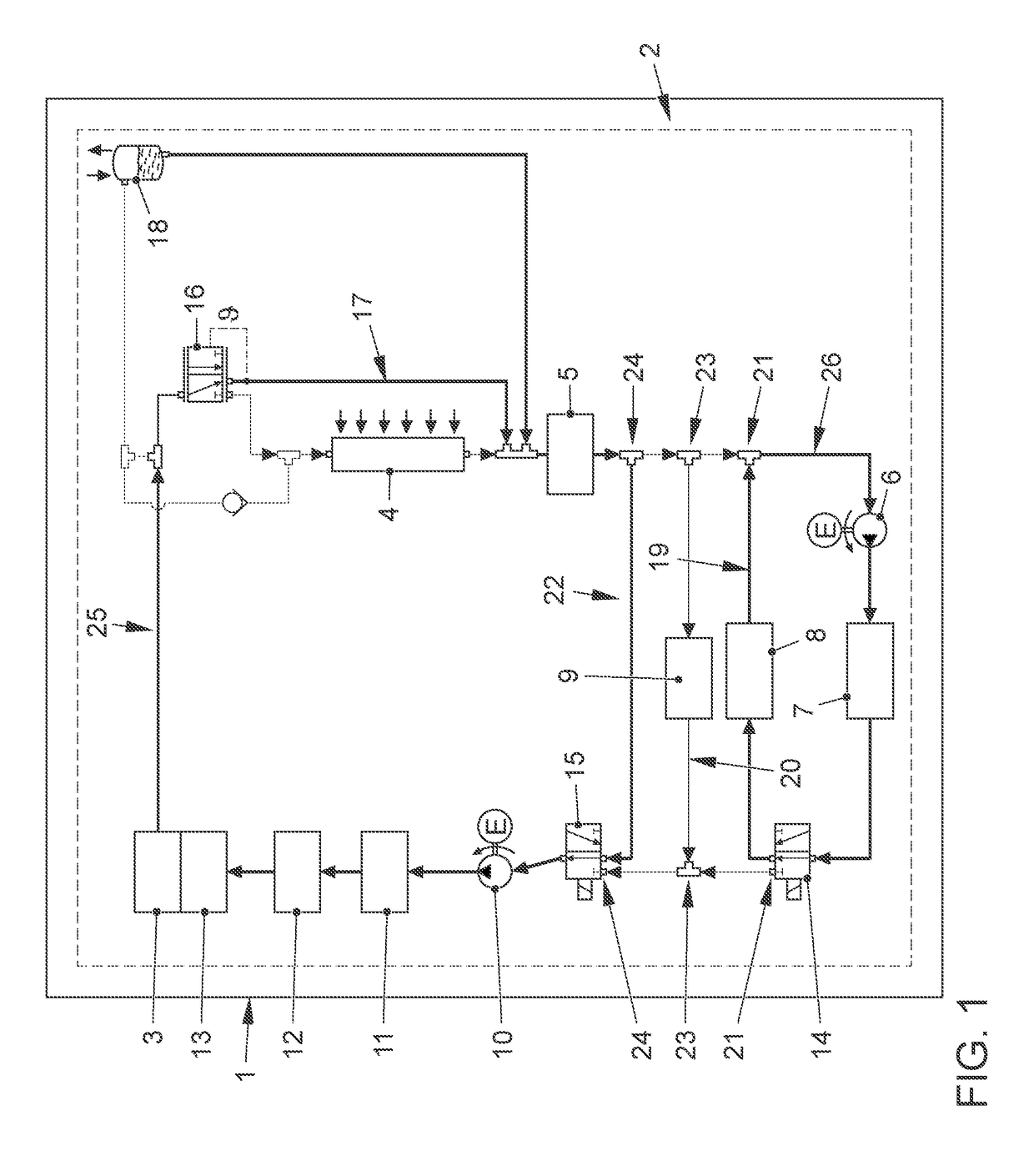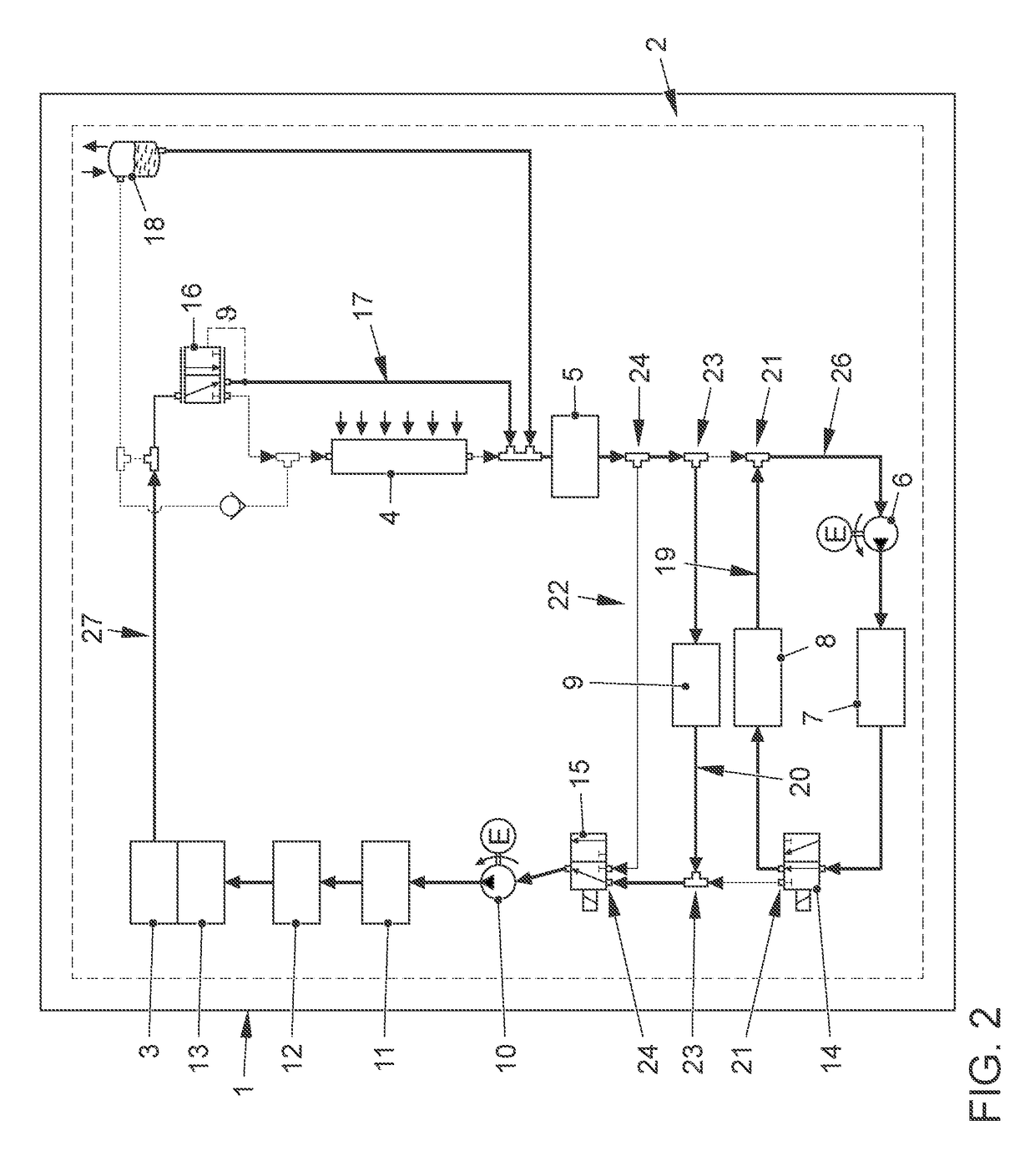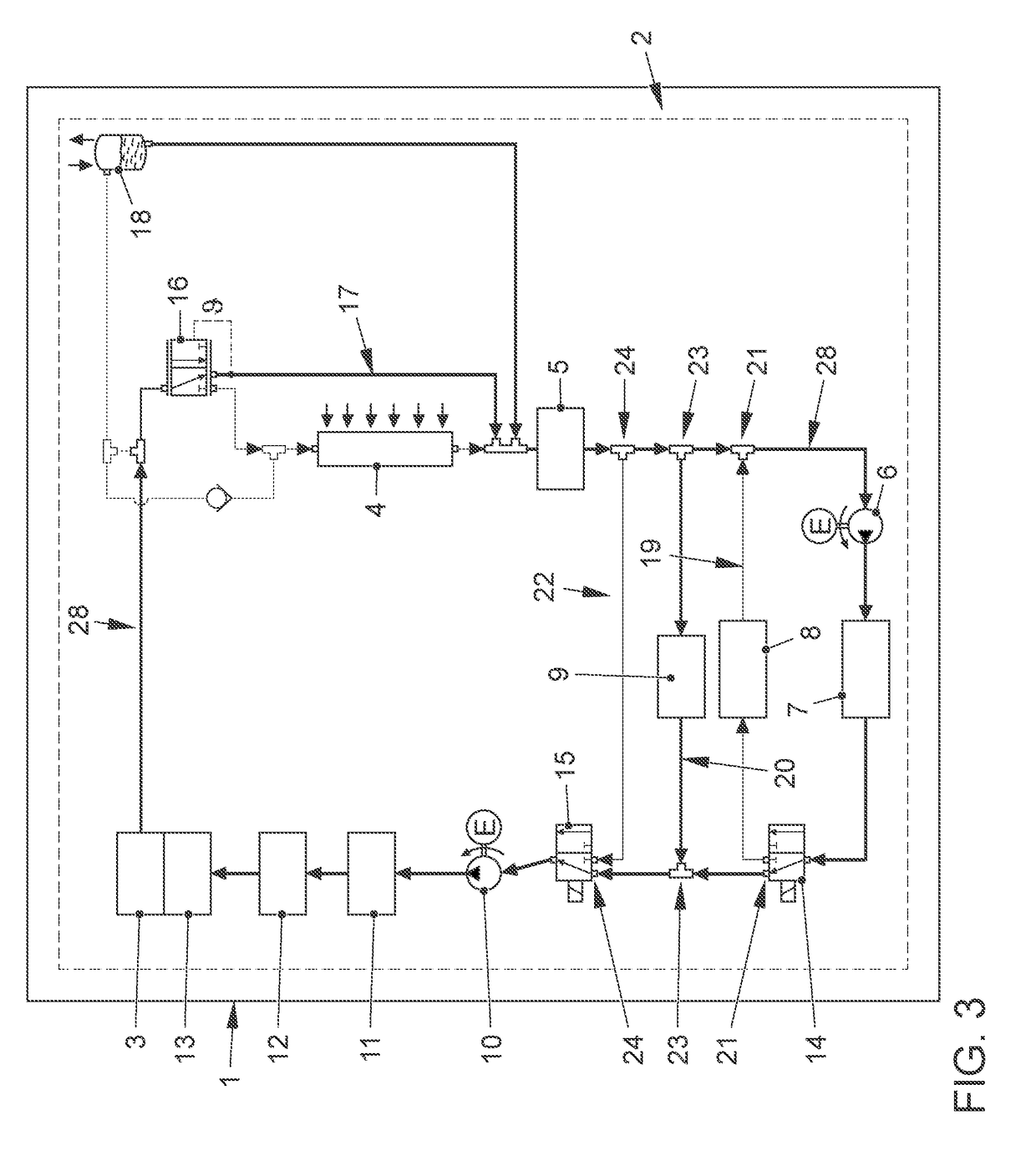Motor vehicle with a cooling system
a technology for motor vehicles and cooling systems, applied in the direction of electrochemical generators battery/fuel cell control arrangements, etc., can solve the problems of limited functionalities or relatively complicated designs of cooling systems disclosed therein, and achieve the effect of sufficient cooling effect and quick and energetically advantageous heating of the interior
- Summary
- Abstract
- Description
- Claims
- Application Information
AI Technical Summary
Benefits of technology
Problems solved by technology
Method used
Image
Examples
Embodiment Construction
[0038]FIGS. 1 through 5 show in greatly simplified illustrations a motor vehicle 1 according to the invention with a cooling system 2. The cooling system 2 includes, as components to be integrated, an electric traction motor 3, an ambient heat exchanger 4, a DC-DC converter 5, a second electric coolant pump 6, a traction battery 7, an electric coolant heater 8, a coolant-refrigerant heat exchanger 9 of an air conditioner (not illustrated), a first electric coolant pump 10, a first charging device 11, based on inductive energy transfer, for charging the traction battery 7, a second charging device 12 for charging the traction battery 7, in which an electrically conductive connection to an electrical energy source is to be established by means of a plug-in connection, and power electronics 13, associated with the traction motor 3, which may in particular include a pulse-controlled inverter. These components of the cooling system are [connected] by a plurality of coolant lines and by m...
PUM
 Login to View More
Login to View More Abstract
Description
Claims
Application Information
 Login to View More
Login to View More - R&D
- Intellectual Property
- Life Sciences
- Materials
- Tech Scout
- Unparalleled Data Quality
- Higher Quality Content
- 60% Fewer Hallucinations
Browse by: Latest US Patents, China's latest patents, Technical Efficacy Thesaurus, Application Domain, Technology Topic, Popular Technical Reports.
© 2025 PatSnap. All rights reserved.Legal|Privacy policy|Modern Slavery Act Transparency Statement|Sitemap|About US| Contact US: help@patsnap.com



